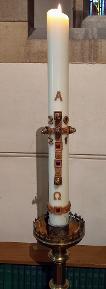Funerals
The Funeral Service is both the end of the human journey in this world and a whole series of journeys in itself. From the eighth century or earlier, the Funeral rite was a continuum, broken by movements from place to place, from home to church, to the place of burial and back to the home. This pattern was severely truncated at the Reformation, but today's pastoral needs suggest a return to it. As grieving is a process marked by different stages, we believe that one helpful contribution the Church can make pastorally is to have a series of services and resources in which some of these different stages can be recognized, spoken of in advance or recapitulated.
So the Funeral Service is part of a longer continuum, though it stands perfectly well on its own if necessary. Following on from ministry to the sick we move into ministry at the time of death, through the possibility of prayers in the house after someone has died, prayers in church or at home before the funeral, through the journey which brings the body to the dead person's spiritual home on earth, the church, for the funeral itself, and then on to some prayers at home after the funeral, a later Memorial Service and the provision for annual memorials. The bereaved will need to be able to say different things to God and to one another at each of these different stages.
The structure within the Funeral Service itself moves from the human to the divine, from earth to heaven. It begins with an acknowledgement of the different groups of people who come to mourn, for some of whom the early part of the service will be a recapitulation of those stages since the death which they have not been able to witness. The service provides an opportunity for the celebration of the life of the person who has died, and moves from this into the reading of Scripture and prayer, before reaching its climax in the commendation and the committal.

